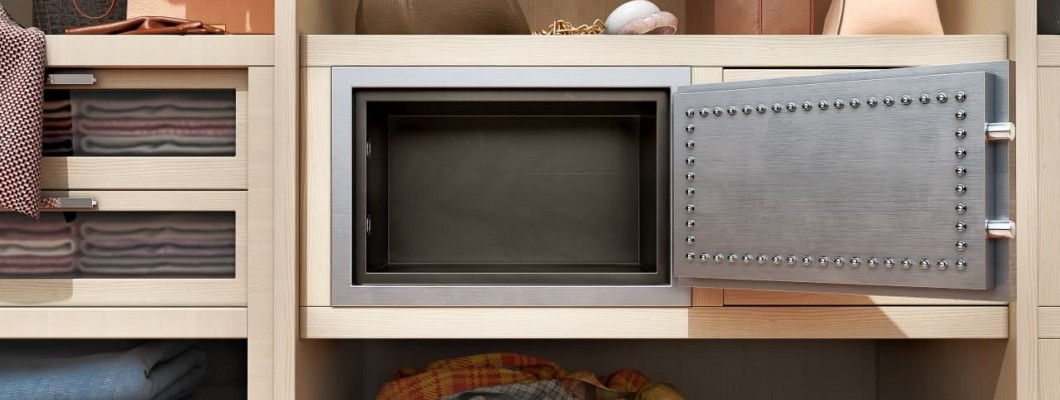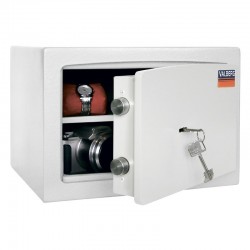
When planning to purchase a safe or when the purchased safe has already been brought home, one of the most important questions arises - where to install it. It must be said right away that there is no single best place, as everything depends on the type, size, and weight of the safe, as well as what is planned to be stored in it and how often access to the contents of the safe will be needed.
Bedroom: if the safe is intended to store jewelry that is worn daily, or a weapon for self-defense that needs to be quickly accessible in a crisis situation, then the best place to install the safe is in the bedroom. When you wake up, you will not have to leave the room to access the items stored in the safe.
Closet or garage: if the safe is intended for storing items that are not needed too often or urgently, then the safe can be installed in a less convenient place: for example, in a built-in closet, garage, or guest bedroom.
By a concrete wall: a fireproof safe, which most often stores paper money, passports, wills, contracts, and other documents, is best installed on a concrete wall, where the safe will have a concrete foundation. (Security experts recommend choosing the corner of a room for a fireproof safe.) The garage or basement for a fireproof safe will be an ideal place; however, it should be taken into account that these rooms should not be easily accessible to potential thieves.
Inside the wall: the wall is one of the safest places to install a safe. Why? If it is not possible to access the contents of the safe, thieves are often inclined to steal the safe itself, but if the safe is built into the wall, this is very difficult and time-consuming. Additionally, a built-in wall safe can be conveniently hidden behind a picture, tapestry, or furniture, providing not only additional security but also contributing to the aesthetics of the room.
Inside furniture: it is not uncommon for a homeowner not to want the safe to be easily visible for both security reasons and because it does not fit into the interior. Then a good solution would be to hide the safe in one of the pieces of furniture: for example, in a built-in wardrobe. It is important that there is a concrete wall behind the furniture where the safe is planned to be placed, to which the safe can be attached. If the safe is purchased before buying/making built-in furniture, then a special compartment can be designed in the new custom furniture specifically for the safe.
On the floor: many safes can be secured to a concrete floor to ensure additional security. It should be taken into account that for small safes this will not be a good option either from an aesthetic point of view or from the point of convenience. Floor mounting is more suitable for medium and large-sized safes, which in most cases are also too heavy to be placed elsewhere.
In the floor: this is not a widely used solution, but for a small-sized safe, a special hiding place can be made in the floor. It will be difficult for thieves to find the safe, but it should be noted that this solution also has its drawbacks - the safe will be exposed to negative effects from dirt and moisture.
First or second floor: when choosing which floor of the building to install the safe on, the weight of the safe is crucial. Safes weighing less than 500 kg can be installed on any floor of the building, while safes weighing more than 500 kg should preferably be installed only on the first floor of the building. For safety reasons, it is also advisable to consult a specialist before installing the safe.
Important things to consider when installing a safe:
- When installing a safe in the garage, care should also be taken for the garage's security system itself.
- An electronic safe should not be installed in a cold room with high humidity.
- It is good if the safe is difficult to access for potential thieves, but when hiding the safe, you should not overdo it to the point where it becomes difficult for you to access the safe yourself.
- The safe should be attached to the floor or wall made of strong material, so wood will not be the best option.
- The safe may also not be attached to the wall or floor, but any security expert will advise you to do this if the safe is designed for such attachments.
We hope that one of these ideas will work for you. If you want to receive an in-depth and personalized consultation, contact a safe seller who has extensive experience in this field!








































































